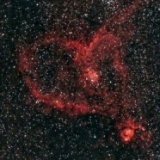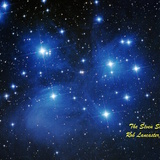INDI Library v2.0.7 is Released (01 Apr 2024)
Bi-monthly release with minor bug fixes and improvements
New Internal Solver for Mac, Windows, and Linux -- Testing/ Experiments needed
- Jose Corazon
-

- Offline
- Supernova Explorer
-

- Posts: 1119
- Thank you received: 182
Replied by Jose Corazon on topic New Internal Solver for Mac, Windows, and Linux -- Testing/ Experiments needed
Crash = minor issue ????
I take it your daytime job is not in the car insurance business, Rob.
Car sales, perhaps?
Nonetheless, I am very grateful for your great work here and I will test it out tonight again. I take it, the new code is already merged?
I am recompiling as I am writing this and will keep you posted.
Cheers,
Jo
Please Log in or Create an account to join the conversation.
- Rob Lancaster
-
 Topic Author
Topic Author
- Offline
- Supernova Explorer
-

- Posts: 2880
- Thank you received: 815
Replied by Rob Lancaster on topic New Internal Solver for Mac, Windows, and Linux -- Testing/ Experiments needed
Yes, the code is merged in StellarSolver, but I don't know if the PPA will have the up to date version yet.
Please Log in or Create an account to join the conversation.
Replied by Jim on topic New Internal Solver for Mac, Windows, and Linux -- Testing/ Experiments needed
Between playing with a few settings, and the development fixes over the last few days (and solving on an Intel i7), it takes longer to write the log than it does to do the solve. Good stuff! Thanks for all the hard work Rob and Jasem!
Jim
Please Log in or Create an account to join the conversation.
- Rob Lancaster
-
 Topic Author
Topic Author
- Offline
- Supernova Explorer
-

- Posts: 2880
- Thank you received: 815
Replied by Rob Lancaster on topic New Internal Solver for Mac, Windows, and Linux -- Testing/ Experiments needed
Thank you for testing!
Please Log in or Create an account to join the conversation.
Replied by Jack on topic New Internal Solver for Mac, Windows, and Linux -- Testing/ Experiments needed
Internal SEP | local astrometry | 7 - MidSizedStars (or others) = no solution
Internal SEP | StellarSolver | *.* = kstars crash
N.B. Fits viewer Highlights misspelled as Hightlights
Thanks all.
Please Log in or Create an account to join the conversation.
- Rafa Barberá
-

- Offline
- Elite Member
-

- Posts: 219
- Thank you received: 41
Replied by Rafa Barberá on topic New Internal Solver for Mac, Windows, and Linux -- Testing/ Experiments needed
When I press START it crashed. In the terminal I can read:
Please Log in or Create an account to join the conversation.
- Rob Lancaster
-
 Topic Author
Topic Author
- Offline
- Supernova Explorer
-

- Posts: 2880
- Thank you received: 815
Replied by Rob Lancaster on topic New Internal Solver for Mac, Windows, and Linux -- Testing/ Experiments needed
Please Log in or Create an account to join the conversation.
- Rafa Barberá
-

- Offline
- Elite Member
-

- Posts: 219
- Thank you received: 41
Replied by Rafa Barberá on topic New Internal Solver for Mac, Windows, and Linux -- Testing/ Experiments needed
Yes, of course!. Is a stack generated with the last version of SiriL You can download it from my drive crash on RP4
Please Log in or Create an account to join the conversation.
Replied by Heiko on topic New Internal Solver for Mac, Windows, and Linux -- Testing/ Experiments needed
the underlying pattern. What is SEP's function and in what way differs
StellarSolver from Local Astronomy? Why are the results on the same
light frames different? Is this a matter of the fine-grained settings?
Is it only my subjective impression that the parallel solver is faster
but not necessarily more succesfull? Some more information could be helpful.
SEP | StellarSolver | 1-FastSolver (no Parallel Algorithm)
- M66 ok
- Iris Nebula ok
- M57 failed
SEP | StellarSolver | 4-ParallelSmallScale
- M66 ok
- Iris Nebula failed
- M57 failed
SEP | StellarSolver | 7-Midsized-Stars (with Parallels set to
Automatic)
- M66 ok
- Iris Nebula failed
- M57 failed
SEP | StellarSolver | 7-Midsized-Stars (not set to Parallels)
- M65 ok (named M65 and not M66)
- Iris Nebula failed
- M57 failed
SEP | Local Astrometry | 1-FastSolving (no Parallel Algorithm)
- M65 ok
- Iris Nebula ok
- M57 failed
SEP | Local Astrometry | 4-ParallelSmallScale
- M65 ok
- Iris Nebula failed
- M 57 failed
GNU / Linux
Git
KDE neon
KStars | EKOS | INDI
and some cheap hardware
Please Log in or Create an account to join the conversation.
- Rob Lancaster
-
 Topic Author
Topic Author
- Offline
- Supernova Explorer
-

- Posts: 2880
- Thank you received: 815
Replied by Rob Lancaster on topic New Internal Solver for Mac, Windows, and Linux -- Testing/ Experiments needed
That was an interesting image.
I loaded it up and printed the first 2 messages you sent, but that just means the header info didn't have the scale and position info it would need to do an informed solve, it would need to do a blind solve. Then I ran some tests. The Internal SEP did not return any stars when I tried to extract them, but the external sextractor did return stars, so we can use that for solving. We can investigate why SEP didn't return stars. So for solving I tried this combination:
External Sextractor, Local Astrometry, Parallel Small Scale Profile. It solved with this combination of settings in about 10 seconds.
I will look into why it didn't get any stars in SEP.
Thanks,
Rob
Please Log in or Create an account to join the conversation.
- Rob Lancaster
-
 Topic Author
Topic Author
- Offline
- Supernova Explorer
-

- Posts: 2880
- Thank you received: 815
Replied by Rob Lancaster on topic New Internal Solver for Mac, Windows, and Linux -- Testing/ Experiments needed
Thank you very much for all the testing you are doing, it is very helpful! I can provide a little info. Sorry I haven't written documentation yet. I have not had much time. Maybe I can start it right here:
For plate solving there are several parts in StellarSolver that are important:
______________________________________
Source Extraction: to find the stars in your image in order to solve. In StellarSolver, I have the option for 3 different methods:
- Internal SEP: this requires no external programs, it is the same SEP star extraction algorithm we have used in KStars for Focus and Guiding for awhile now. It is essentially a library version of the method below (though there are some differences which is why they give slightly different results). It is entirely internal to the program, so there are no files saved to disk for the extraction which is great for Raspberry Pis etc.
- External Sextractor: this does require an external program, SExtractor, or the Source Extractor. This is their official standalone program. The drawback is you would need to have sextractor installed and it does save a bunch of files to disk in order to do its operations.
- BuiltIn Sextractor: This uses whatever method of source extraction the solver uses by default. StellarSolver uses SEP, just like the Internal SEP setting. Local astrometry.net uses its own source extraction method which uses a bunch of external resources including python, netpbm and other packages. (All those external dependences caused me huge amounts of headaches years ago when I ported kstars to Mac computers) And finally ASTAP has its own internal source extractor which is pretty good.
Note: Either Internal SEP or External Sextractor should be superior to the built in version of the programs. SExtractor is REALLY good at extracting stars, and that greatly speeds up solving, but it has a LOT of options that we need to perfect.
______________________________________
The Solver: The program that will be used to do the solving of the sources that were found. In StellarSolver, I give 4 options for that
- StellarSolver: This option uses an internal library build of astrometry.net that I worked really hard this spring to produce. It uses no external files like configuration files etc, and saves no files to disk (except 0KB solved and cancel files) which is great for Raspberry Pis. Since this library is entirely internal, no programs have to be installed beyond KStars itself, so if you are going to use this option, you don't need the astrometry.net package at all. This is going to make a world of difference for Windows users who cannot install astrometry.net unless they do it in a compatibility layer.
- Local Astrometry.net: This option uses the good old fashioned local astrometry.net installation many users have used with KStars for years. The only differences in Stellarsolver are that we no longer need the configuration files, we can do parallelization to make it MUCH faster, and we can use Internal SEP or External Sextractor to give it the sources to solve. So I took the same old tool and gave it more uses.
- Local ASTAP: ASTAP was available in KStars previously, but I have implemented more options for using it in StellarSolver as well as giving you the option to use Internal SEP or SExtractor with it. The options for ASTAP are now shared with astrometry so you can just set your options in the profile and it will work fine. ASTAP does NOT support parallelization. I tried.
- Online Astrometry.net: This option was previously available in KStars as well, but I did do a bunch of work on it to make it work better, to use Internal SEP or Sextractor if you like, to use the options in the profiles, and to provide clearer feedback to the user about what is going on. Technically, online Astrometry.net is already using parallelization on their server, so I didn't implement it for this.
______________________________________
The Options Profiles
I found that the number of options for plate solving and source extraction that were available to the user was truly bewildering, but really powerful. So I have been working to consolidate the options and make the same set of options work for all the source extractors and solvers across the board. That way if you perfect a profile, you should be able to use it no matter which solver or source extractor you use. And you should be able to switch back and forth quickly and easily. I am hoping that we can perfect the profiles so that they will be helpful for users using many different setups. But I will seriously need help trying to improve them and get them to that point. To this end, I have made the options profile editor so you can use the profiles I think are good, so that you can make your own profiles, change my profiles, and so you can share good profiles back and forth. The same profile can be used for both source extraction and solving if you develop a truly good profile. I know the editor nor the profiles are perfect yet, but I think it is a far easier way to approach this than having a huge amount of options all in different places.
Here are the profiles that I have developed along with some comments. This could definitely be changed in the future.
Profiles mainly for Solving:
1-FastSolving. -- I developed this before I made parallel algorithms. I had optimize the parameters to solve images fast, but it does NOT do parallel solves.
2-ParallelSolving -- This was my first parallel profile. It can be faster than FastSolving, but does not work nearly as well as the next 2. I might delete it.
3-ParalleLargeScale -- This profile is meant to solve DSLR scale images very fast. It assumes larger image scales to solve faster than the above.
4-ParallelSmallScale -- The DEFAULT for solving. This profile is meant to solve telescopic images quickly. Most users should probably use this one.
Profiles mainly for Source Extraction in Focus and Guide
5 - AllStars -- This profile is meant to detect all the stars in an image, it is meant
6 - SmallSizedStars -- I meant this one to just detect smaller stars and ignore bigger stars
7 - MidSizedStars -- I meant this one to just detect medium sized stars
8 - BigSizedStars -- I meant this one to just detect bigger stars and ignore smaller stars
I would say that my profiles for Solving are much more refined, the Source Extraction ones need work. That being said, some have said that they had better solving with one of the ones I meant for Source Extraction. Maybe they could be the starting point for solving profiles. Hence the reason that I made the profiles universal. If you develop a really good one, you can use it for everything.
Hopefully this helps and was clear,
Rob
Please Log in or Create an account to join the conversation.
- Rob Lancaster
-
 Topic Author
Topic Author
- Offline
- Supernova Explorer
-

- Posts: 2880
- Thank you received: 815
Replied by Rob Lancaster on topic New Internal Solver for Mac, Windows, and Linux -- Testing/ Experiments needed
Do you have this Iris Nebula image? There was clearly a setting or two in the Fast solving profile that made this one solve it and not the others. Maybe try editing the FastSolving profile and turning on Parallelization and seeing if it still solves?
Please Log in or Create an account to join the conversation.

